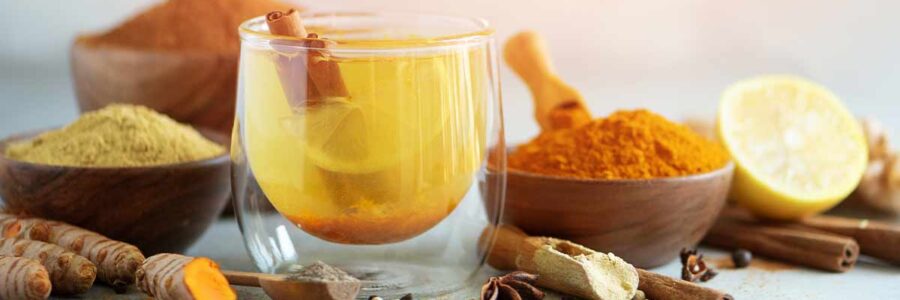10 Natural Remedies You (Probably) Already Have in Your Home: Some of the most common health-supporting tools are so surprisingly common that you probably already have them in your home. Today we explore 10 of the top natural remedies that you may already have lying around your kitchen and how to use them to optimize your health
1. Honey for Multiple Ailments
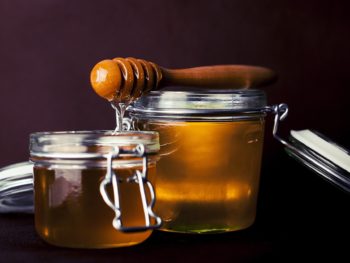
This natural sweetener is one of those natural remedies for many ailments, used internally and topically. Honey is loaded with antioxidants and antifungal and antibacterial properties. As a result, it is a great natural remedy used topically for healing wounds. Honey can be applied directly to a scrape, cut, or burn to help soothe and protect the skin from infection.1.2
When you consume honey, there are a host of benefits as well! Its phytonutrient, antioxidant, and antifungal properties help boost the immune system. Thanks to its antibacterial properties, it has been used effectively to treat Helicobacter pylori (H. pylori) bacterial infections.3
Honey can also be used to soothe sore throats or suppress coughs. Honey may relieve coughs more effectively than over-the-counter cough suppressant medicines that contain dextromethorphan.4
Many of these health benefits are specific to raw, or unpasteurized, honey—so stick to the raw stuff readily available in health stores across the country. Many honey brands in big supermarkets are pasteurized and may contain other ingredients. Ensure the honey you invest in is raw, 100% honey, and preferably local if you can find it!
2. Ginger for Digestive Boost and Nausea
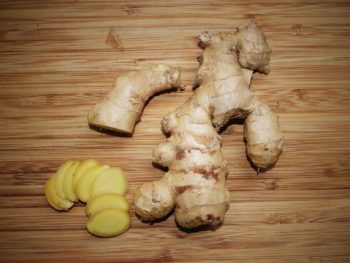
Ginger is another one of the all-star natural remedies due to its wide range of medicinal properties. This root’s main bioactive ingredient is gingerol, which has potent anti-inflammatory and antioxidant properties.5 Ginger can be consumed fresh, dried, powdered, or as an oil, juice, or tea.
Drinking ginger tea daily can help strengthen your digestive system as well as prevent indigestion, nausea, and heartburn. It ignites the digestive fire and boosts saliva production, which also helps you better digest food and absorb more nutrients. To benefit, try chewing on a small piece of raw ginger or having a cup of strong ginger tea before a meal or first thing in the morning. Ginger tea can be made by boiling a saucepan of filtered water with an inch of fresh ginger grated into it for 10-20 minutes.
Ginger is also traditionally used as a natural remedy for nausea triggered by any cause, including road sickness or morning sickness during pregnancy. It can be consumed as tea or simply by chewing on a small piece of fresh ginger.
3. Oats for Skin Irritation
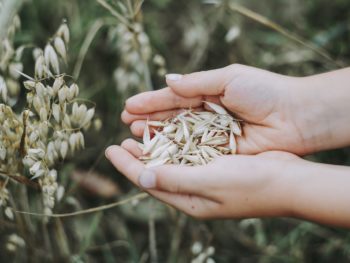
Oats have potent skin-soothing and balancing properties when used topically. They contain long-chain sugars called water-binding polysaccharides and hydrocolloids that hold moisture on the skin. Oats act as an emollient, soothing and softening the skin. Their fat content can help hydrate and prevent itchiness.6
Oats also contain naturally cleansing compounds called saponins. They help exfoliate the skin and remove the dirt and oil that may otherwise clog up pores.
A great way to reap the benefits of oats is to soak them in an oat bath. Instead of putting oats directly into the bath and clogging up the drain, place 1 cup of oats into a muslin bag, cheesecloth, or simply a tied-up pantyhose for easy cleanup.
4. Fermented Foods for Gut Health
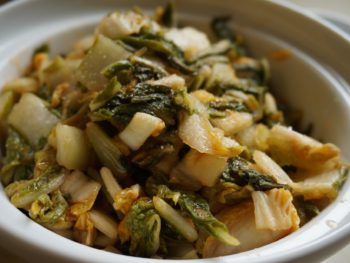
Although probiotic capsules are often promoted to benefit the gut flora, fermented foods are an even better source of good bacteria and one of the fantastic natural remedies at home! Rotating different types of fermented foods, including sauerkraut, kimchi, miso, yogurt, kefir, kvass, and kombucha, can help introduce various live strains in much higher quantities than are found in a pill.
Incorporating a small number of fermented foods with every meal helps boost digestion by introducing raw enzymes, healing and repopulating the digestive tract with good bacteria, and offering you an all-around boost to the immune system.7,8
5. Black Tea for Sunburns
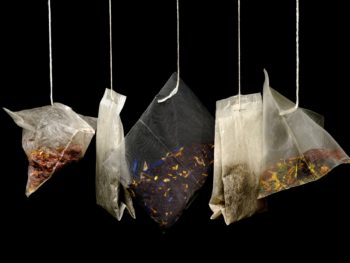
The tannic acid in black tea is excellent for soothing the skin after a sunburn. We suggest putting three bags of organic black tea in a saucepan, bringing the water to a boil, and then removing the saucepan from the heat to let the tea steep for 10 minutes. Transfer the tea to a spray bottle and store it in the fridge. Cold black tea is key (to prevent adding heat to the area).
Spray the cold black tea on the affected area in the shower for easier cleanup, but don’t rinse it off. Let the tea sit on the skin (ideally overnight) for maximum benefit.
6. Used Coffee Grinds and Olive for Dull, Flaky, or Dry Skin
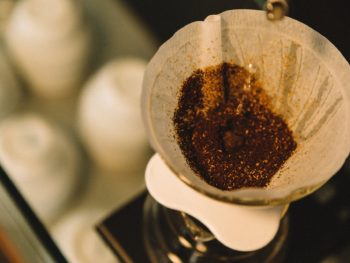
Finding natural remedies from coffee grinds:
This body scrub can be used on the whole body (avoiding the face) for a powerful deep, invigorating clean! The coffee grinds energize and exfoliate the skin, and the olive oil leaves it hydrated and feeling silky smooth.
This is a great tip for anyone who makes coffee at home to get more use out of your grinds other than simply your morning cup of joe! Keep your used coffee grinds in a mason jar, and when it is half full (about 2 cups of grinds), add ¼ cup olive oil to the jar and shake well.
Coffee grinds act like a perfect scrubbing agent to help remove dead skin. Gentle circular motions help activate the lymphatic system, which promotes detoxification. Olive oil helps hydrate the skin and lock in moisture.
7. Apples or Apple Cider Vinegar for Heartburn
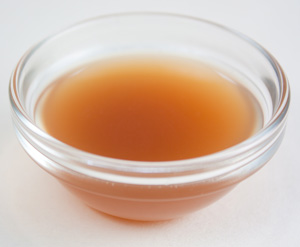
Although the mechanisms are not completely understood, apples and apple cider vinegar have been used to help neutralize heartburn. One common cause of heartburn is a lack of stomach acid; studies suggest that a high pectin (found in apples) diet helps reduce the pH in the lower and upper esophagus.10
Due to its acidic nature, apple cider vinegar can also be used to reduce the pH of the stomach and promote better digestion.11 Apple cider vinegar should be diluted in water by adding 1 or 2 tablespoons of organic unfiltered apple cider vinegar to one cup of filtered water.
8. Tart Cherry Juice for Insomnia
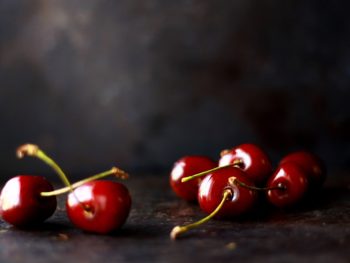
Tart cherry juice naturally contains high melatonin levels, which helps relax the body and promote sleep. One pilot study highlighted the ability of Montmorency tart cherry juice to extend sleep time by 84 minutes! The study’s benefits were achieved by consuming eight ounces of the juice morning and night, approximately 1 to 2 hours before sleep.12
Remember that not all cherry juice is created equal! This melatonin-rich juice excludes tart cherries, also known as sour, dwarf, or Montmorency cherries.
9. Peppermint Tea for Digestion
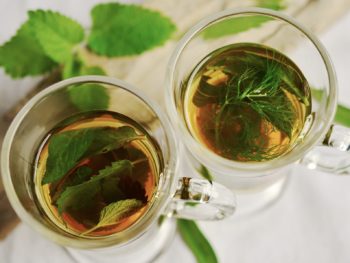
Peppermint tea has been used as a folk medicine for centuries to support digestion. Studies show that peppermint has properties that promote digestion and relax muscles. This results in a wide range of benefits, including gas and bloating relief, and can also reduce heartburn and symptoms of IBS. Peppermint oil can also be used for the same effect.13,14
Since it is caffeine-free, peppermint tea can be consumed multiple times daily, including after dinner. To drink, steep either a peppermint tea bag in hot water for 5 minutes or for a more potent tea, you can simmer five leaves of dried peppermint in a pot of water for 10 minutes.
10. Turmeric for Inflammation
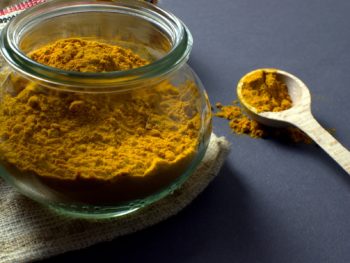
No home natural remedies list would be complete without turmeric! Various studies highlight the brain and body health benefits of curcumin, the bioactive compound found in turmeric. Many of these benefits are rooted in turmeric’s power to reduce inflammation. Curcumin is so powerful that it matches the effectiveness of certain over-the-counter anti-inflammatory drugs without side effects.15-17
Inflammation plays a crucial role at the root of a wide range of ailments, so addressing inflammation has an incredible ripple effect on whole body-mind health.18
Curcumin makes up about 3% of turmeric, and consumed alone, it is poorly absorbed into the bloodstream. Two ways to increase the bio-availability of curcumin are first to combine turmeric with black pepper. Due to its piperine content, black pepper increases turmeric’s half-life and increases curcumin’s absorption rate.19 Curcumin is also fat-soluble, so it may be a good idea to take it with fat, like coconut oil, ghee, butter, or olive oil.
References
- Efem, S. E. E. “Clinical Observations on the Wound Healing Properties of Honey.” British Journal of Surgery, vol. 75, no. 7, 1988, pp. 679–681., doi:10.1002/bjs.1800750718.
- Oryan, Ahmad, et al. “Biological Properties and Therapeutic Activities of Honey in Wound Healing: A Narrative Review and Meta-Analysis.” Journal of Tissue Viability, vol. 25, no. 2, 2016, pp. 98–118., doi:10.1016/j.jtv.2015.12.002.
- Ali AT, Chowdhury MN, al Humayyd MS. Inhibitory effect of natural honey on Helicobacter pylori. Tropical Gastroenterology: Official Journal of the Digestive Diseases Foundation. 1991 Jul-Sep;12(3):139-143.
- Paul, Ian M. “Effect of Honey, Dextromethorphan, and No Treatment on Nocturnal Cough and Sleep Quality for Coughing Children and Their Parents.” Archives of Pediatrics & Adolescent Medicine, vol. 161, no. 12, Jan. 2007, p. 1140., doi:10.1001/archpedi.161.12.1140.
- Malu, S.p, et al. “Antibacterial Activity and Medicinal Properties of Ginger (Zingiber Officinale).” Global Journal of Pure and Applied Sciences, vol. 15, no. 3-4, Mar. 2009, doi:10.4314/gjpas.v15i3-4.48561.
- Kurt A. Reynertson, et al. “Anti-Inflammatory Activities of Colloidal Oatmeal (Avena Sativa) Contribute to the Effectiveness of Oats in Treatment of Itch Associated With Dry, Irritated Skin.” Journal of Drugs in Dermatology, vol. 14, no. 1, Jan. 2015, pp. 43–48., https://www.researchgate.net/profile/Kurt_Reynertson/publication/271332623_Anti-Inflammatory_Activities_of_Colloidal_Oatmeal_Avena_sativa_Contribute_to_the_Effectiveness_of_Oats_in_Treatment_of_Itch_Associated_With_Dry_Irritated_Skin/links/54d1308f0cf25ba0f040d0b0.pdf.
- Marco, Maria L, et al. “Health Benefits of Fermented Foods: Microbiota and Beyond.” Current Opinion in Biotechnology, vol. 44, 2017, pp. 94–102., doi:10.1016/j.copbio.2016.11.010.
- Selhub, Eva M, et al. “Fermented Foods, Microbiota, and Mental Health: Ancient Practice Meets Nutritional Psychiatry.” Journal of Physiological Anthropology, vol. 33, no. 1, 2014, doi:10.1186/1880-6805-33-2.
- Anitha, T. “MEDICINAL PLANTS USED IN SKIN PROTECTION.” Asian Journal of Pharmaceutical and Clinical Research, vol. 5, no. 3, July 2012, https://pdfs.semanticscholar.org/b752/adb92d1bc62e51b85602ba66671fa3efdd71.pdf.
- Miyazawa, Reiko, et al. “Effects of Pectin Liquid on Gastroesophageal Reflux Disease in Children with Cerebral Palsy.” BMC Gastroenterology, vol. 8, no. 1, 2008, doi:10.1186/1471-230x-8-11.
- Holzapfel, Cynthia. Weight Loss and Good Health with Apple Cider Vinegar. Healthy Living Publications, 2014.
- Losso, Jack N., et al. “Pilot Study of the Tart Cherry Juice for the Treatment of Insomnia and Investigation of Mechanisms.” American Journal of Therapeutics, vol. 25, no. 2, 2018, doi:10.1097/mjt.0000000000000584.
- Anheyer, Dennis, et al. “Herbal Medicines for Gastrointestinal Disorders in Children and Adolescents: A Systematic Review.” Pediatrics, vol. 139, no. 6, Apr. 2017, doi:10.1542/peds.2017-0062.
- Harrington, Andrea M., et al. “A Novel Role for TRPM8 in Visceral Afferent Function.” Pain, vol. 152, no. 7, 2011, pp. 1459–1468., doi:10.1016/j.pain.2011.01.027.
- Jurenka, Julie S. “Anti-inflammatory properties of curcumin, a major constituent of Curcuma longa: a review of preclinical and clinical research.” Alternative medicine review: a journal of clinical therapeutics vol. 14,2 (2009): 141-53.
- Lal, B et al. “Efficacy of curcumin in the management of chronic anterior uveitis.” Phytotherapy research: PTR vol. 13,4 (1999): 318-22. doi:10.1002/(SICI)1099-1573(199906)13:4<318::AID-PTR445>3.0.CO;2-7
- Sood, Shaveta, and Monika Nagpal. “Role of Curcumin in Systemic and Oral Health: An Overview.” Journal of Natural Science, Biology and Medicine, vol. 4, no. 1, 2013, p. 3., doi:10.4103/0976-9668.107253.
- Libby, Peter. “Inflammatory Mechanisms: The Molecular Basis of Inflammation and Disease.” Nutrition Reviews, vol. 65, 2008, doi:10.1111/j.1753-4887.2007.tb00352.x.
- Shoba, Guido, et al. “Influence of Piperine on the Pharmacokinetics of Curcumin in Animals and Human Volunteers.” Planta Medica, vol. 64, no. 04, 1998, pp. 353–356., doi:10.1055/s-2006-957450.


